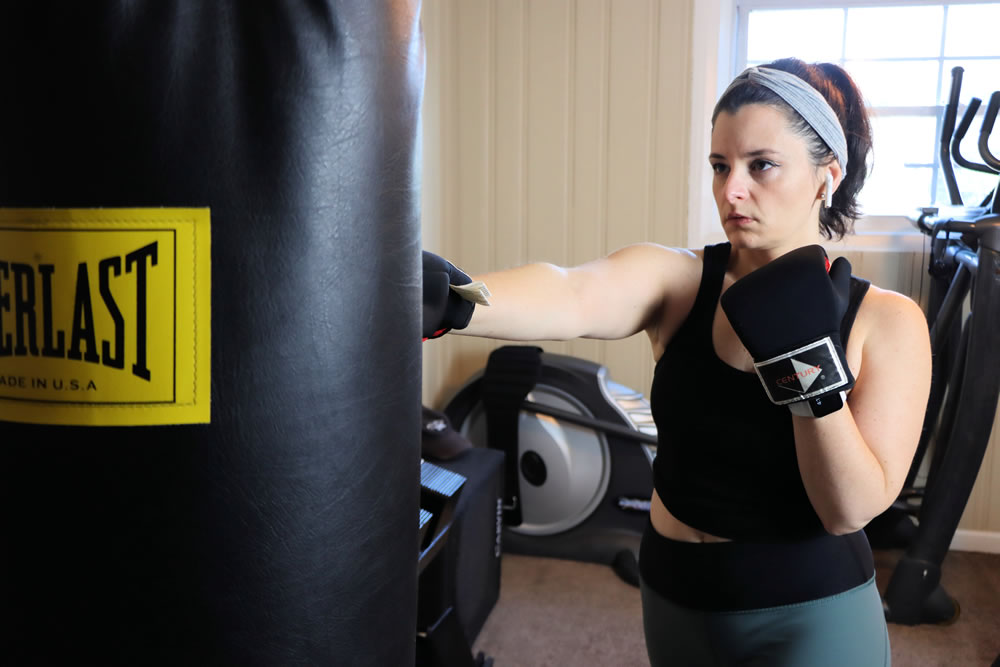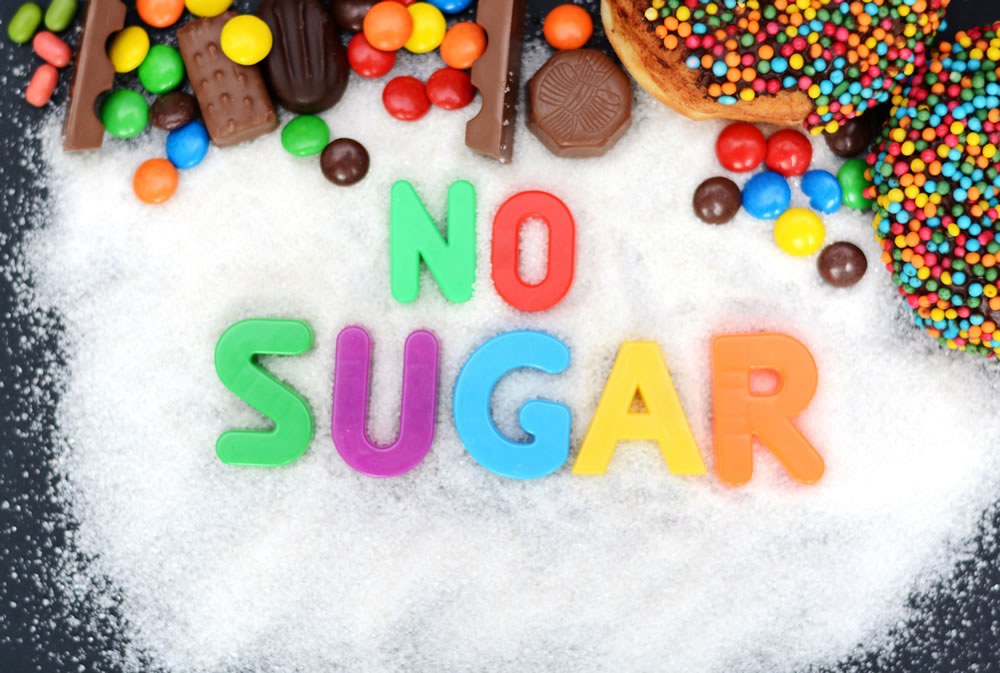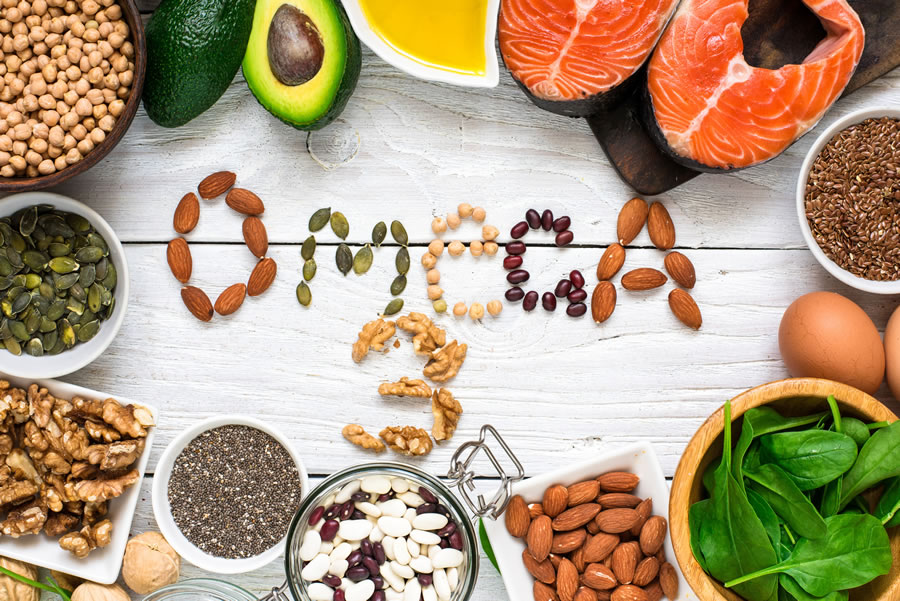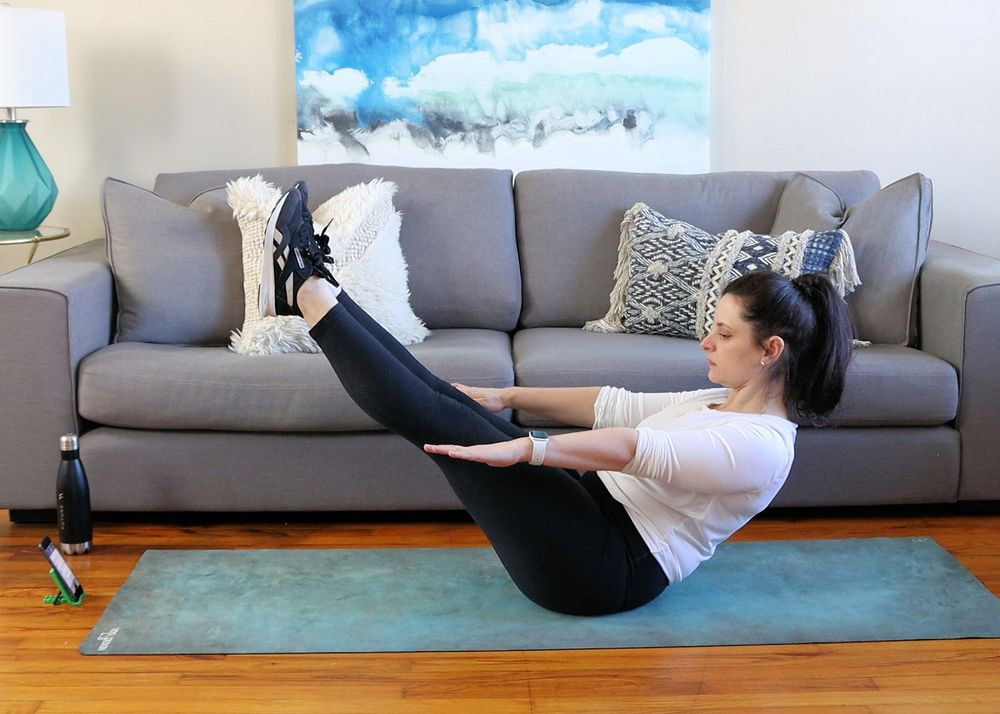Whether you’re just getting back on track with your weight loss goals, or you’ve been at it for a while now, you may have noticed that the last 5 to 10 pounds feel like the hardest to lose. You’re not imagining it.
The truth is plateaus on the scale and slow weight loss aren’t uncommon.
So why does fat loss become more difficult as we age, when in our teens and 20s the weight would melt off?
A few reasons fat loss can be difficult
You’re Not Active
When you’re busy with family, work, school (or all the above) prioritizing exercise or even finding the time to be active can be difficult, especially if you’re exhausted. If you’re not active, you could easily eat more calories than you’re burning.
You’ve Lost Lean Muscle
After age 30, we continue to lose lean muscle at a rate of 3-8% per year. [1] Lean muscle burns more calories than fat. But if you don’t actively strength train to maintain your muscle, metabolism slows and your body will burn fewer calories than it did before, making it easy to gain weight.
Ahh! You’re Stressed Out
This one is huge! Stress can make us feel too tired to want to exercise, but what’s worse, it can make us crave junk food while raising cortisol, the “stress” hormone linked to weight gain. Cortisol is especially notorious for causing that stubborn belly fat. [2]
Your Sleep Stinks
Sleeping fewer than 7 hours a night has been linked in many studies to a higher body mass index (BMI) and weight gain. [3, 4]
Those who sleep poorly quality are also more likely to make poor food choices and eat more. [5] This can make a tremendous difference when you’re trying to lose weight.
You Don’t Eat Right
Convenient prepared foods, takeout, and grab-and-go food are easy and quick options when we’re too busy to cook. But these foods are often high in calories, sugar, and unhealthy fats that promote weight gain and negatively affect our fat-burning hormones. They also usually have little to no nutrition, which can leave us hungry and prone to constant snacking and overeating. [6]
Your Hormones Are Changing
Natural drops in estrogen in women and testosterone in men after 40 can encourage weight gain as can pregnancy and menopause.
Poor thyroid function (hypothyroidism) can trigger thyroid hormones to go out of balance needed for healthy metabolism, causing weight gain. [7]
How to Lose Those Last 10 Pounds
The good news is that if you’re ready to lose the last 10 pounds, it may take a determined mindset and commitment, but it is possible!
Whether you’ve been trying to lose weight for a while, or you’re ready to get back on track, here are a few tips to help you finally lose those stubborn pounds.
1. Eat More Whole Foods and Avoid the Processed Stuff
If you want to lose weight, eating whole and plant-based foods is key for a few reasons. [8]
Full of vitamins, minerals, antioxidants, and fiber, whole foods not only nourish our body but also keep us fuller longer with fewer calories than processed foods, which can increase hunger cravings, encourage us to eat more, and sabotage our weight loss goals. [9]
The body also uses whole foods more effectively while promoting balance so we can burn more fat.
Healthy whole foods to include in your diet can be lean meats, fish, eggs, veggies, leafy greens, berries, whole grains, plain Greek yogurt, and sweet potatoes.
When cooking, also skip frying and roast, bake, sauté or steam instead.
2. Prioritize Protein at Every Meal
You can’t underestimate the power of protein! Eating protein in the right amounts can promote weight loss. But unfortunately, most of us don’t eat enough of this important macronutrient.
Here’s why protein is a must for fat loss
Not only does the body finds it harder to store protein as fat, but it stimulates hormones that make us feel more feel full and satiated after we eat (peptide YY, GLP-1, and cholecystokinin) while also decreasing our hunger hormone ghrelin. [10]
In fact, a study published in Nutrition Journal found that protein is more satiating than fat and when we eat a high-protein diet, we snack less. This strategy can help us take in fewer calories, lose more weight and maintain that weight loss over the long term. [11]
We also need protein to build and maintain lean muscle. More muscle requires our body to burn more calories, which can speed up fat loss when we’re active. [12]
- For weight loss, try to get .73-1.0 grams per pound of body weight (1.6 – 2.2 grams of protein per kilogram). To calculate, multiply your current weight by .73 or 1 to get how much you should be eating in grams of protein per day.
- Athletes and heavy exercisers should aim for 1-1.5 grams per pound or 2.2-3.4 grams of protein per kg for weight loss.
Excellent sources of lean protein include chicken, turkey, beef, fish, shrimp, Greek yogurt, tofu, tempeh, and beans.
3. Avoid Sugar and Artificial Ingredients
To lose those last 10 pounds, cut refined sugar from your diet.
The problem with sugar is that it is high in calories with zero nutrition to show for it. What’s worse is that sugar can stimulate our hunger hormone (ghrelin) encouraging us to overeat, making it a major cause of weight gain. [13, 14, 15 ]
Plus, we usually find sugar in foods with other high-calorie, high-fat, low-fiber ingredients, foods like white flour, butter, and oil. Hello, baked goods! These make us feel good in the short term, but in the long run can cause energy crashes, leaving us craving more and more of the bad stuff.
Obvious sugary treats that can sabotage our weight loss include foods like muffins, doughnuts, cookies, candy and soda, and cake. But sugar can also hide in prepared foods like BBQ sauce, tomato sauce, salad dressings, energy drinks, granola bars, protein bars, yogurt, and ketchup.
Always check labels for clean ingredients and only buy items that are made with foods you can pronounce. Skip anything with preservatives and artificial flavors.
Even natural sources like honey and maple syrup are still sugar and should be avoided.
When your sweet tooth strikes, reach for a piece of fruit, Greek yogurt with berries, or a piece of zero-sugar, chocolate instead.
4. Track your Food Intake by Counting Macros (Macronutrients)
To lose fat, you consistently need to burn more calories than you consume each day.
The problem is most of us don’t know the nutritional value of the foods we’re eating in relation to the portions we’re eating them.
And many foods marketed as “healthy” have sneaky amounts of sugar, high amounts of fat, or lower amounts of protein, which can put us in a calorie surplus.
For example, only 2 tablespoons of peanut butter have a whopping 188 calories!
That’s why it’s helpful to track your food so you can see which eating or drinking habits are sabotaging your weight loss.
And research is showing evidence that eating your macronutrients (protein, carbohydrates, and fat) in the right ratios can be more effective than counting calories alone. [16]
The best way to keep track of your macros and your daily food intake is to start by downloading a food tracking app like MyFitnessPal, MyPlate, or Calorie Counter.
These apps will quickly calculate your daily calorie needs along with the ratio of macros you should eat for your weight loss goals. You can also use a macro-counting calculator online (like this one) to find the macro ratios best for you.
Though not totally necessary, using a kitchen scale can make tracking your food more accurate. But it will help you see the nutritional value of foods in relation to portions.
For example, if you exercise less than 1 hour each day, it’s recommended your total food for the day should contain 30% protein, 30% fat, and 40% carbs.
The best part is that counting macros apps work with any diet (keto, Mediterranean, vegan, etc.) and most of the macro counting apps also have meal plans, so you don’t have to struggle with figuring out what to eat.
You may find logging your food tedious at first, but understanding the nutritional value of what you’re eating can be a huge eye-opener and the difference between seeing the scale move or not.
5. Drink Plenty of Water
Drinking more water is one of the simplest changes you can make to help you burn more fat to get the pounds off.
Thirst from dehydration can mimic hunger, which means if we’re not drinking enough water, we may take in excess calories we don’t need.
A 2015 study found that drinking about 16 ounces (500ml) of water 30 minutes before meals may help with weight loss, while an earlier study in the Journal of Endocrinology & Metabolism found that drinking 16 ounces of water increased metabolic rate by 30 percent. [17, 18]
Experts now recommend drinking half your weight in ounces of water per day. So a 150-pound person would drink 75 ounces of water per day. But you may need to drink more if you sweat and exercise a lot or live in a dry area.
If you forget to drink enough water throughout the day, try using a water tracker app on your phone. Or grab yourself a water bottle with time markers to help you remember to drink enough H20 throughout the day.
6. Cut Out Toxic Oils and Get More Omega 3-Fatty Acids
Vegetable oils like canola, soybean oil, cottonseed oil, safflower, sunflower oil, soybean oil, and foods made with them like margarine, were once mass-marketed as heart and body healthy alternatives to olive oil, butter, and lard. In fact, increases in vegetable oil consumption have coincided with greater rates of chronic diseases and obesity.
A recent animal research study found that soybean oil caused 25% more weight gain than other fats and may even be worse than sugar for weight gain. [19] And may be because of their high content of omega-6 fatty acids, which can promote inflammation in the body and weight gain.
While we need some omega-6 fatty acids to stay healthy, the typical Western diet can supply 10 or more times the amount of the anti-inflammatory omega-3 fatty acids ideal for health. [20]
Studies show that getting more anti-inflammatory omega-3 fatty acids in your diet may not only increase metabolism but help you burn more fat. [21, 22, 23]
To get more omega-3 fatty acids in your diet, eat at least 3.5 ounces (100 grams) of fatty fish like wild-caught salmon at least twice a week or take a fish oil supplement.
A study published in the Journal of the International Society of Sports Nutrition found participants who took fish oil supplements lost an average of 1.1 pounds (0.5 kilograms) of fat and also a decrease in the stress hormone cortisol, that’s associated with weight gain. [24]
When cooking, choose other healthy oils like ghee, olive oil, coconut oil, and avocado oil.
7. Use MCT Oil For More Fat Burning
For another healthy fat, it may be worth working MCT oil (medium-chain triglycerides) into your diet, which research has shown can increase metabolic rate, reduce hunger and preserve muscle mass during weight loss. [25, 26, 27 ]
A flavorless oil extracted from coconut oil popular with keto dieters, MCTs are quickly and easily absorbed short molecules of fat that the body can use for immediate energy needs.
A small study with 8 men found that 1–2 tablespoons of MCT oil daily increased their metabolic rate by 5%, burning them an average of 120 additional calories per day. [28]
That’s over 12 pounds per year!
Never use MCT oil for cooking with heat. Try adding it to your morning coffee, and protein shakes, stir it into soups, or drizzle it over salad.
8. Trying Intermittent Fasting
Practiced for centuries by cultures around the world, intermittent fasting (IF) is a simple practice that alternates periods of eating followed by periods of not eating. Inter With Intermittent Fasting since you’re eating in a smaller window of time, you’ll most likely consume fewer calories, which can help you lose more weight. [29]
Studies show that intermittent fasting can also lower insulin levels and balance blood sugar while increasing Human Growth Hormone (HGH). This can boost metabolism and fat burning, and may promote building muscle mass as well [30, 31, 32]
According to a 2014 study review, intermittent fasting can help you lose anywhere 3–8% of your body weight and 4–7% of your waist circumference over 24 weeks. This is a huge amount. [33]
There are various ways to incorporate fasting into your routine, but the 16/8 method is the easiest to adopt. Simply fast for 16 hours (during sleep counts) and only eat during an 8-hour window. An eating window from noon to 8 p.m is popular and I find it easy to stick to.
And be sure to continue drinking water during your fasting window. Zero-calorie beverages like coffee and tea are okay to drink, but adding milk, creamer, or sugar will break your fast.
With intermittent fasting, it’s best to start slowly and work your way up over a few weeks to get your body used to not eating for extended periods of time.
9. Start Meal Planning
Meal planning can help you avoid binge eating or grabbing unhealthy food when you’re hungry. And when you have food ready to go, you’ll be more likely to stick to making better choices.
There is a variety of meal planning websites and apps available to help you. If you don’t have time to prep and cook, consider a healthy meal delivery service.
Popular diets that many have had success losing weight with include:
Keto: This ultra low-carb high-fat diet focuses on switching your body’s energy-burning system from carbohydrates to ketones to help us burn that hard to budge fat. The benefit of the keto diet is that those who stick with it report losing fat rapidly. With a higher intake of dietary fat, you won’t feel hungry. While good for quick weight loss, you may find sticking to the keto diet not sustainable in the long run.
Mediterranean Diet: This anti-inflammatory diet that doesn’t cut any food groups focuses on eating the way they do in the Mediterranean with lots of vegetables, fruits, whole grains, lean meats, and healthy fats from fish, olive oil, and walnuts. A British study found that those who stuck with the Mediterranean diet for over 12 months lost 5-10% of their body weight and were twice as likely to keep it off. [34]
10. Get Active and Exercise
You can’t exercise the pounds off if you’re not eating right. It won’t work.
But combined with a healthy diet, exercise is the next best thing to help you lose pounds.
Not only can exercise help you burn more calories to put you in a calorie deficit you need to achieve weight loss, but it can also reduce stress, boost mood, improve sleep and help build and tone muscles. And more muscle equals more calories burned.
Here are effective fat-burning forms of exercise
Walking: Studies have shown this low-impact form of exercise is an effective way to lose weight. A 12-week study of 20 obese women found that walking for 50–70 minutes 3 times per week reduced body fat and waist circumference.[35]
And walking is easy to work into any routine or budget. Aim to walk at least 30 minutes 5 times a week, working your way up to 7000-10000 steps per day.
Get a simple pedometer, fitness watch, or app on your phone to help you keep track.
Running/Jogging: Studies have shown that while burning calories, jogging and running can also help burn that stubborn belly fat (visceral fat) linked with the onset of a variety of chronic diseases, including heart disease and diabetes. [36, 37, 38]
HIIT: High-intensity interval training is a great way to torch calories in a short amount of time and includes periods of intense exercise alternated with a short period of rest. You can do HIIT workouts in as little as 10-30 minutes and exercises include planks, burpees, situps, squats, jumping jacks, and more.
According to a 2019 study in the British Journal of Sports Medicine, HIIT workouts burned 28.5% more fat than continuous forms of moderately paced exercise. [39]
You don’t need any special equipment, but if you’ve never done HIIT before, it’s best to seek out the help of a fitness professional to help guide you through a workout that’s safe and effective for your fitness level and ability.
Weight Training: Lifting weights can help you get stronger, but also help build muscle and burn more fat. [40, 41, 42]
A study over 24 weeks found weight training boosted metabolism by 9% in men (140 more calories per day) and 4% in women, burning them an additional 50 calories per day. [43]
If you don’t know how to weight train or what HIIT exercises to do, try a remote personal training app.
Our favorite is Future, where you take a quiz and get paired with your own live elite fitness coach, who will make you effective workouts and guide you to burning more fat every day. You can give Future a try for only $19!
11. Increase Your NEAT
To lose the last 10 pounds exercise is important. But you can also increase your calorie burn throughout the day by doing ordinary tasks like laundry, cooking, going up and down stairs, and standing or walking more when shopping.
Referred to as NEAT or non-exercise activity thermogenesis, doing these simple tasks can add up to thousands of calories throughout the year and help you lose extra pounds over the long term with little extra effort.
12. Keep Yourself Accountable to Stay On Track
The last 10 pounds can be the hardest to lose, which means staying consistent with your food tracking and exercise routine is key. And while we might drop weight quickly in the beginning, most of us will lose weight at a rate of 1–2 pounds per week.
Research shows that when we hold ourselves accountable, we’re more likely to reach our weight-loss and fitness goals.
Ways you can keep yourself accountable include:
- Finding your motivation to lose weight (getting healthy, improved self-esteem, etc.)
- Writing your weight-loss goals
- Sharing your progress in social media fitness groups
- Journaling your daily progress
- Using fitness and food tracking apps
- Rewarding yourself when you reach a goal
 13. Level-Up Your Weight Loss: Get a Coach!
13. Level-Up Your Weight Loss: Get a Coach!
If you really want to lose the last 10 pounds, but you’ve had a hard time sticking with a diet and exercise routine on your own in the past, getting a fitness coach is the most effective way to help you stay motivated so you can reach your weight-loss goals.
Research finds you’ll be 95% more likely to reach your goals and make better choices if you have a person outside your to report your activity to. This can be a nutritionist, trainer, or even a workout buddy.
Luckily, there’s an app for that. Future Fitness is a virtual training app that pairs you with your own remote fitness coach.
Designed based on the science of what motivates us to stay on track with our fitness goals, the Future will make you a workout program customized for you.
But what’s really unique about this app is that your Future fitness coach will check in and message you every day to keep you motivated to exercise and make healthy choices.
I’ve been using it for over a year and it’s the only thing I’ve ever tried that’s helped me stay consistent with my health and wellness goals.
It’s like having a friend who also is also a fitness pro and can help you whenever you need fitness advice, nutrition advice, and motivation.
Future is unique because it gives you more intensive support than most other personal training apps out there.
Here’s why I love Future Fitness:
- My Coach Checks in With Me Every Morning to Make Me Excited to Workout and Make Healthy Choices: I hate missing a workout and using Future has helped me kick excuses to the curb and make fitness a priority.
- It’s Super Convenient: Since it’s an app the workouts are always on your schedule and great for travel.
- You Can Mix Exercise Styles: Want to do HIIT, biking, yoga, Pilates, walking, and weight training? No problem. Only want a weight training plan? That’s okay too!
- Workouts Are Super Effective and Customized Just For You Each Week: Your trainer updates your workouts each week, tailoring them to your ability level and weight loss goals. They’re always fresh so you won’t get bored! You also don’t need any special equipment and you can work out outside, in a hotel room, at the gym or at home!
- Your Coach Can Help You Through Weight Loss Plateaus: Need help with your food choices? Maybe the scale hasn’t moved in a bit? Message your coach and they’ll help you out or schedule a quick meeting to give you some tips and advice or even chat over Facetime. Feeling a little down and ready to binge on a pizza? Your Future coach will talk you down.
- It’s An Amazing Tool to Have a Friendly Fitness Pro Guide You To Weight Loss: Weight loss isn’t always easy, but your Future fitness coach will help you stick to an exercise and diet plan. The more results you see the more motivated you’ll be to keep going.
- It’s A Fraction of the Price of Local Gym Trainers: Gym training packages can get pricey. And if you’re busy or don’t live near a gym, it may not be too convenient for you. With Future, you have a coach by your side every day for way less money.
Future offers a 30-day risk-free trial and you can cancel anytime.
➡ As part of our audience, get your first month of Future for only $19!
So, choose your coach and lose those last 10 pounds now!
➡ See our complete review of Future here
➡ Learn more about the benefits of online training
➡ See how to stay motived to exercise
➡ See How To Get Fit At Home For Beginners
*If you are struggling to lose weight, it may be helpful to speak with a doctor or nutritionist. They can help you create a diet that is tailored to your specific needs and goals.
Better Living uses affiliate links. If you make a purchase through them, we may receive a small commission (for which we are deeply grateful) at no cost to you.







